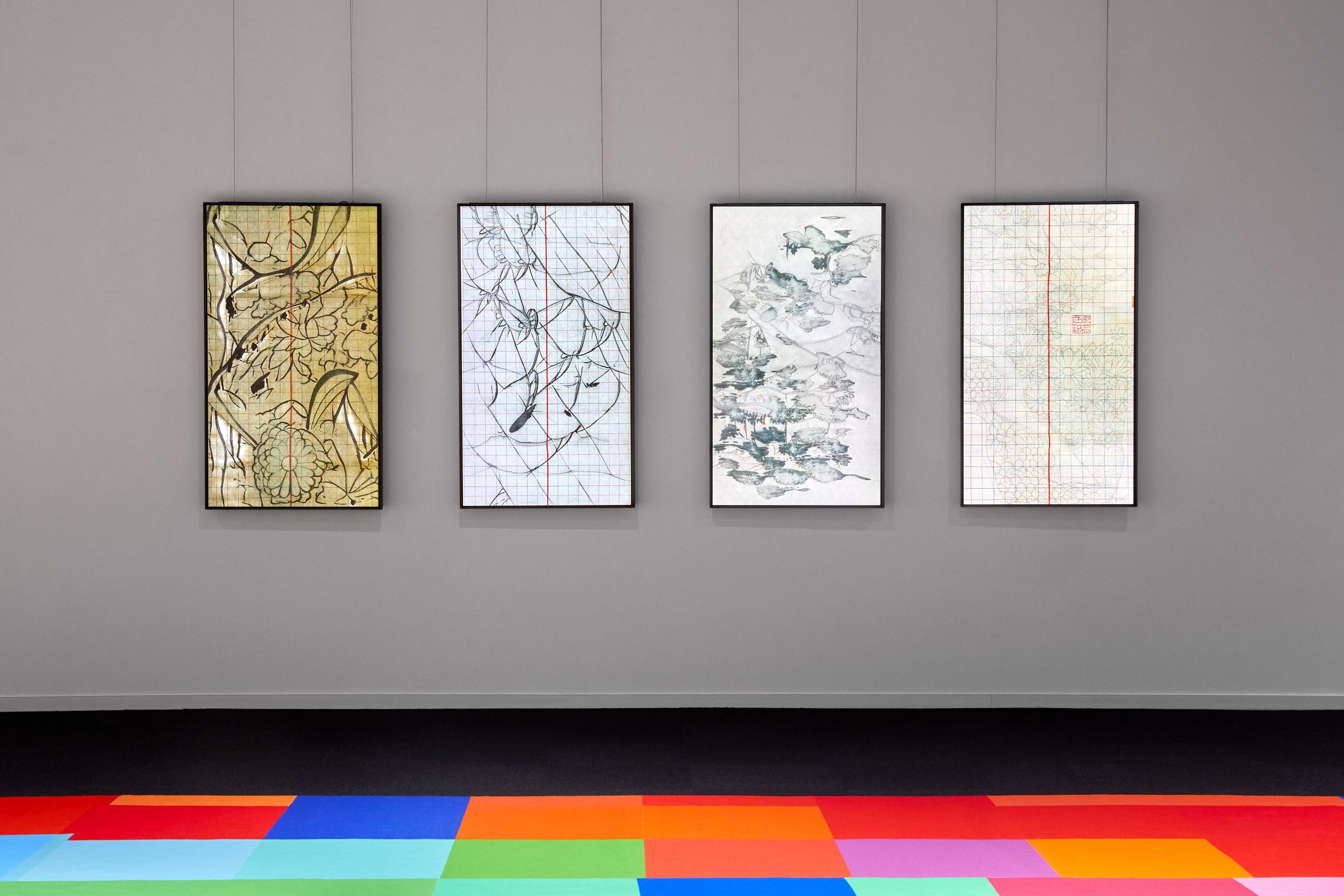RESEARCH
MILESTONES
MILESTONES—Designs in the Margins
New Designs with Digital Archives
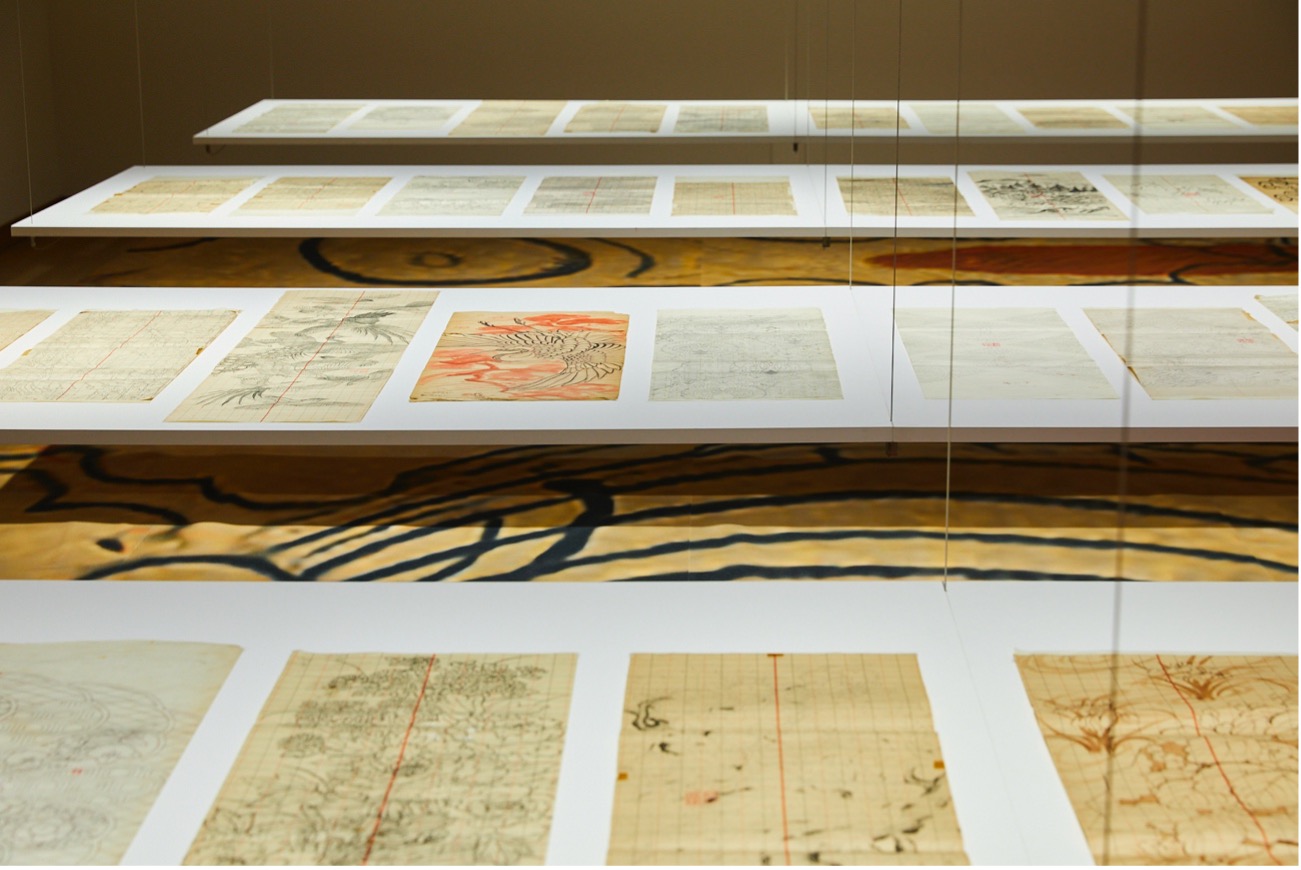
Archive of About 20,000 Designs
On thin sheets of washi paper, square grids are drawn with vermilion lines. The grid paper is covered with patterns penciled in detail or vaguely; some are left with traces from re-drawing. These pieces
of paper with patterns are called zuan [design drawings] and are created at the beginning of Nishijin textile’s production process consisting of some 20 specialized steps. Hosoo’s workshop has kept about 20,000 original copies of such designs used to produce obi in the 1970s. Masataka Hosoo noticed this massive zuan collection, wondering if they could be used for research and development of new designs, which led to the digital archive project of the obi designs. Some of the project’s activities were showcased at the exhibition “Milestones – Designs in the Void.” This article documents the potential, examined from the perspective of the exhibition’s curator, of the designs as digital resources.
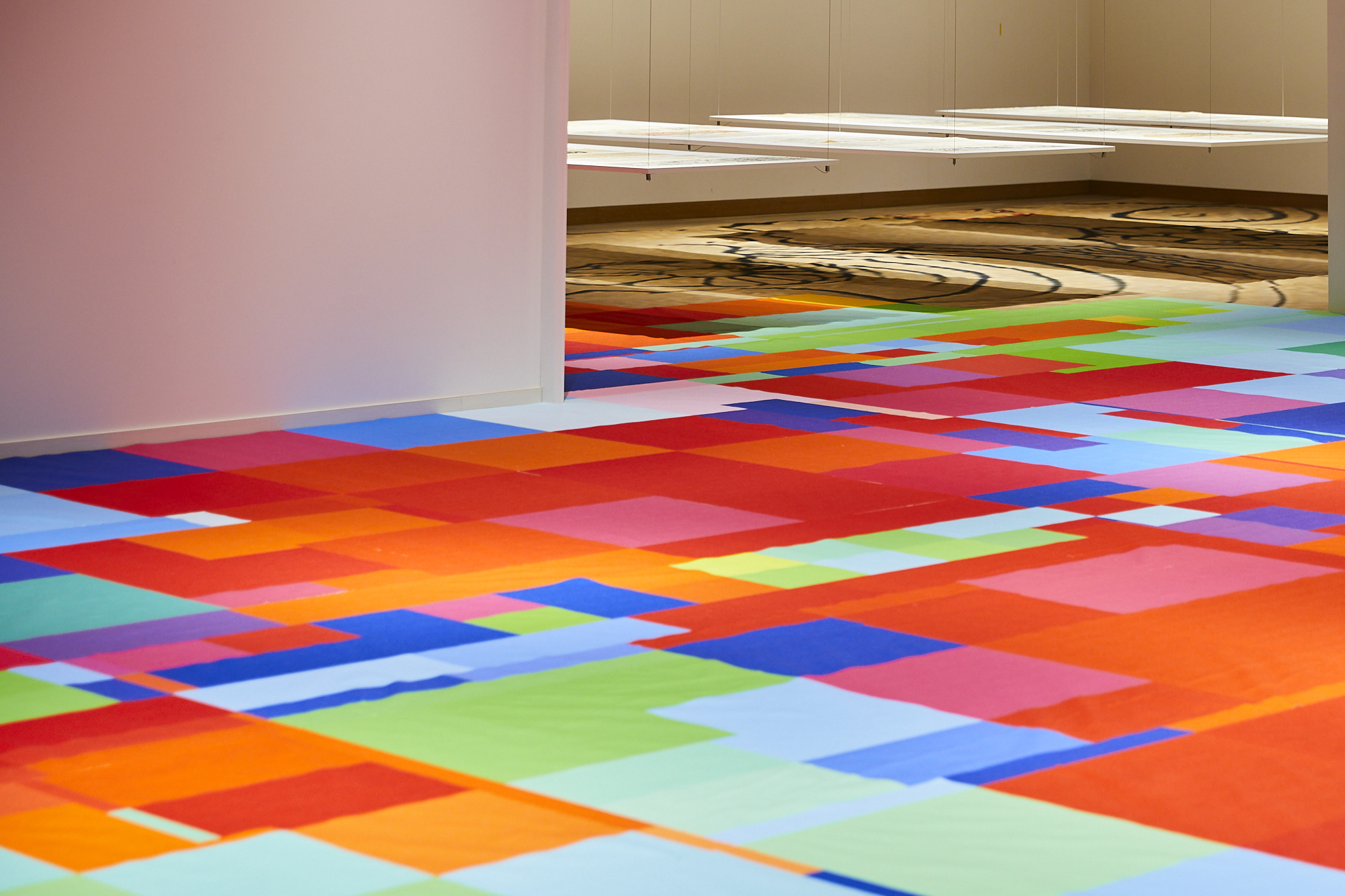
The digital archive project, named Milestones Project, began in 2014 and celebrated its ninth anniversary this year at Kyoto University of the Arts’ Ultra Factory. Through the project, in which participating students played the primary role in manually scanning the original zuan copies one by one, they accumulated extensive digital data containing about 14,000 scans. Even before the project’s onset, Hosoo had been conducting classification and research of classical patterns and
development of products using those patterns. But there is a limit to the human ability to physically classify such a large amount of data piece by piece and understand the content. Therefore, one of the project’s discussion topics was the utilization of these digital resources.
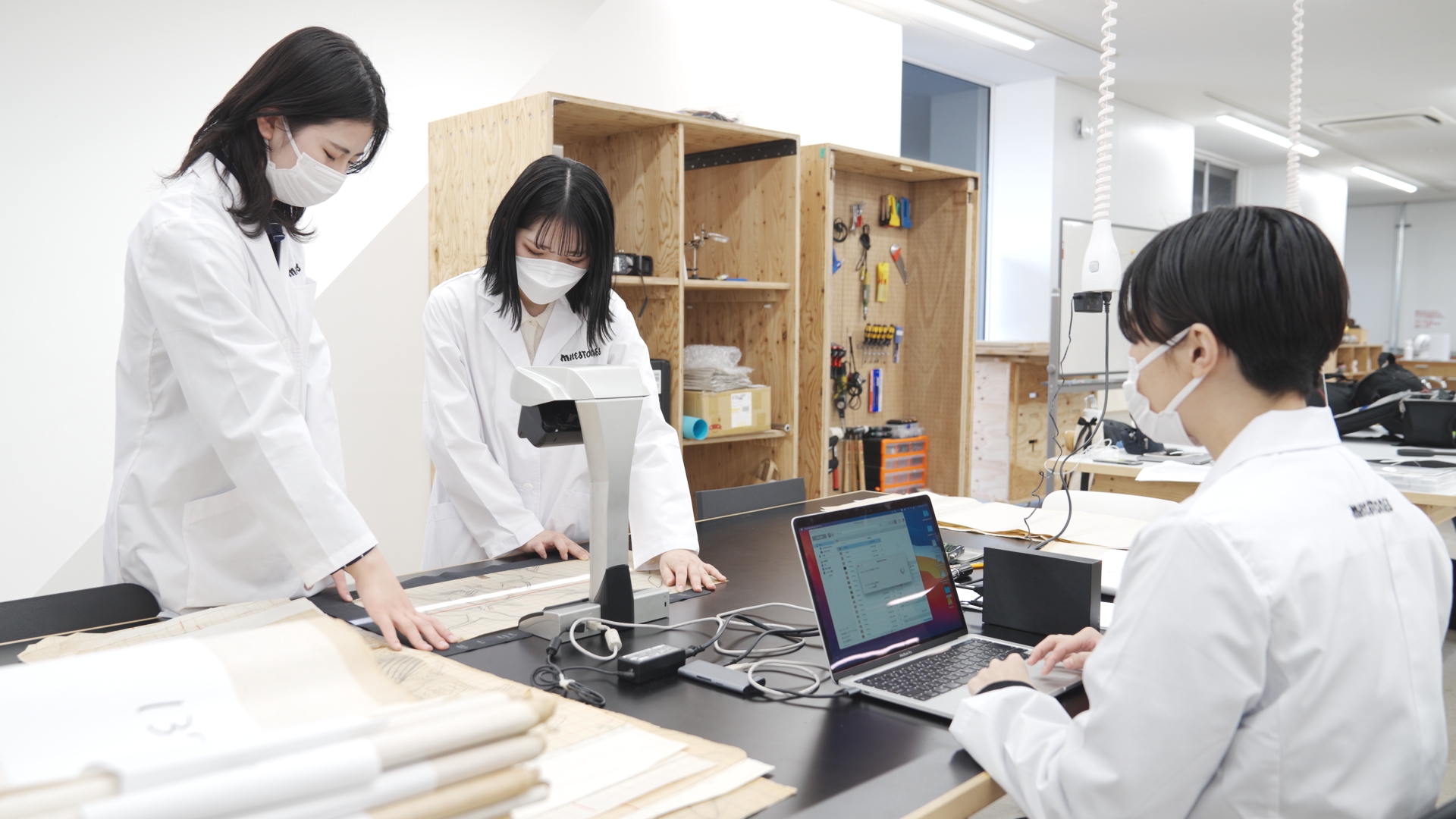
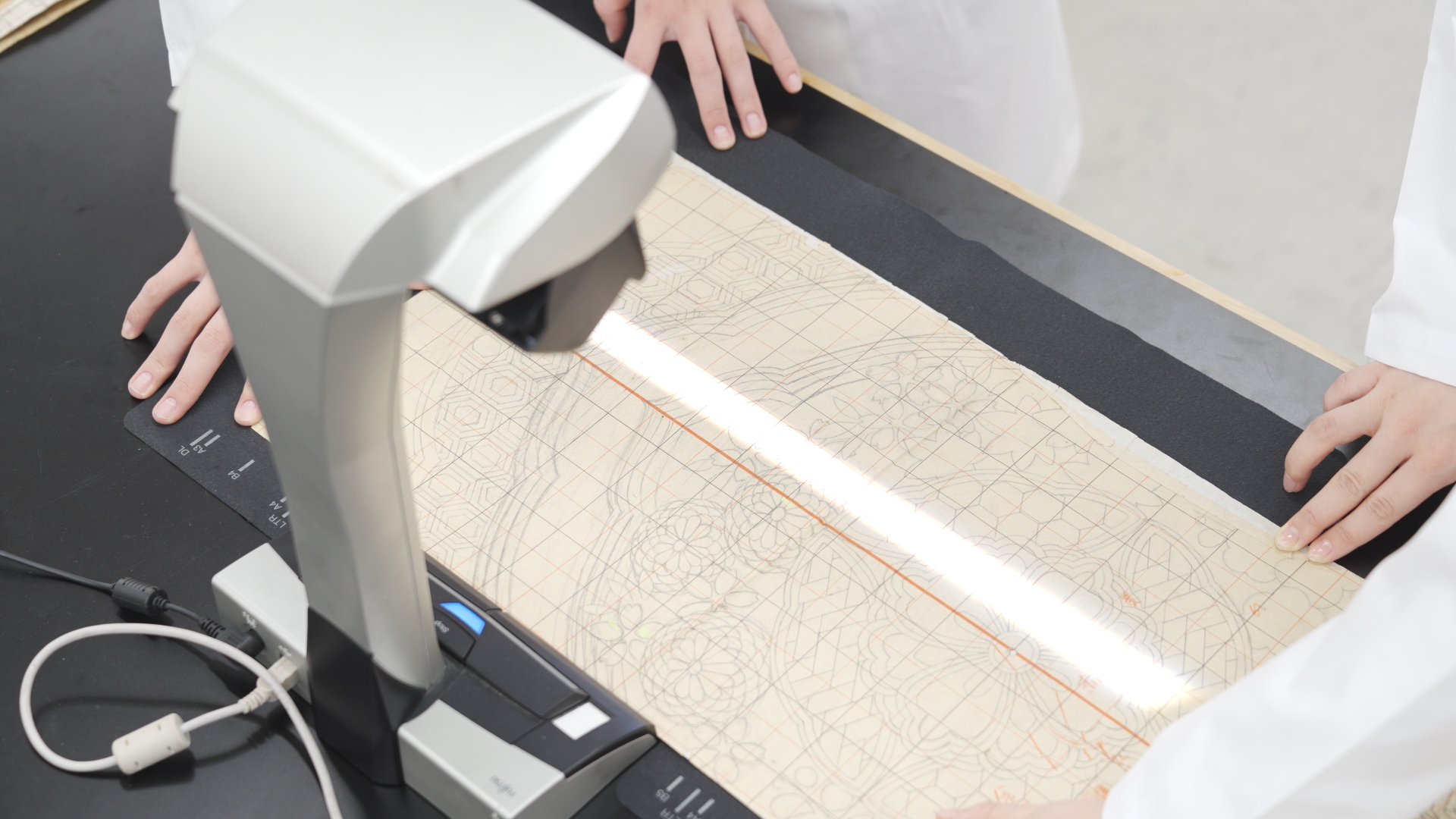
Sensibility Behind “Voids” and Patterns in Designs
The approximately 20,000 designs kept at the workshop are composed of uncolored sketches called atari. While the compositional aspect of the designs, such as patterns, have been passed down over the years, colored designs were purposely excluded from the collection because the sense of color changes with the times. Today, it is usually the case that a designer takes responsibility for the entire
design process up to the finished product. On the other hand, for Nishijin textile, the creation of zuan is only a step in the overall production process and is followed by pattern template design, yarn selection, dyeing, and weaving, involving many craftsmen until the design is finished. Thus, a single craftsman or an artist alone cannot complete the whole design. It is not an exaggeration to say that these steps in Nishijin textile production are linked together by passing the baton of “voids” between the craftsmen. Furthermore, considering the significance of deliberately- kept, unfinished designs, such as uncolored or rough sketches, zuan contains room for incompleteness unthinkable in today’s design process. To begin with, the word zuan was created in the Meiji period as a translation of the word design. Thus, we can say that the origin of design in Japan is found in zuan for kōgei (authentic crafts). In that sense, we saw various possibilities in focusing on the “voids” in zuan.
Another challenge we faced during the process of the exhibition production was how to handle the meanings of the patterns. Some of the patterns used on these Nishijin obi can be traced back to the textiles stored at the Shōsōin Treasure House, which were originally imported in the Asuka period. As we attempted to adopt these patterns passed down over many centuries, the more faithful we tried to be to their meanings, the more limited we felt in developing new designs.
On the other hand, looking at these patterns, we find in their geometric rhythms physiological comfort and universality. In textile, structure and patterns are basically repeated. This is partly due to the production efficiency, but just as music has a periodicity from repeating beats and rhythms, textile also has a periodicity as its essential element. Such periodicity is evident in the design and composition of the depicted patterns. We concluded that, by finding in those patterns physical, physiological, and sometimes psychological abstractness that humans have long succeeded, we could discover a clue for grasping the patterns’ true nature.
According to a craftsman we interviewed about traditional zuan making, there are no clear rules or intentions regarding the combination of the patterns, although, when drawing a pattern, some importance is placed on the context of the pattern, such as seasonality and auspiciousness. Abstract figures, such as a tortoiseshell [honeycomb] pattern, are used intuitively because they help fill the void. The overall balance, rather than the pattern’s meaning, is considered more important. In addition, rigid compositions are perceived as flawed, and such design is described as “not flowing.” In terms of this “flow,” there are two ways of composing an S-shaped, streamline pattern: right flow and left flow. The two carry cultural connotations, where the former is of the Kansai area, and the latter is of the Kanto area, but more importantly, this flowing composition results in a formal sensibility that reminds us of natural landscapes such as a river or a mountain range.
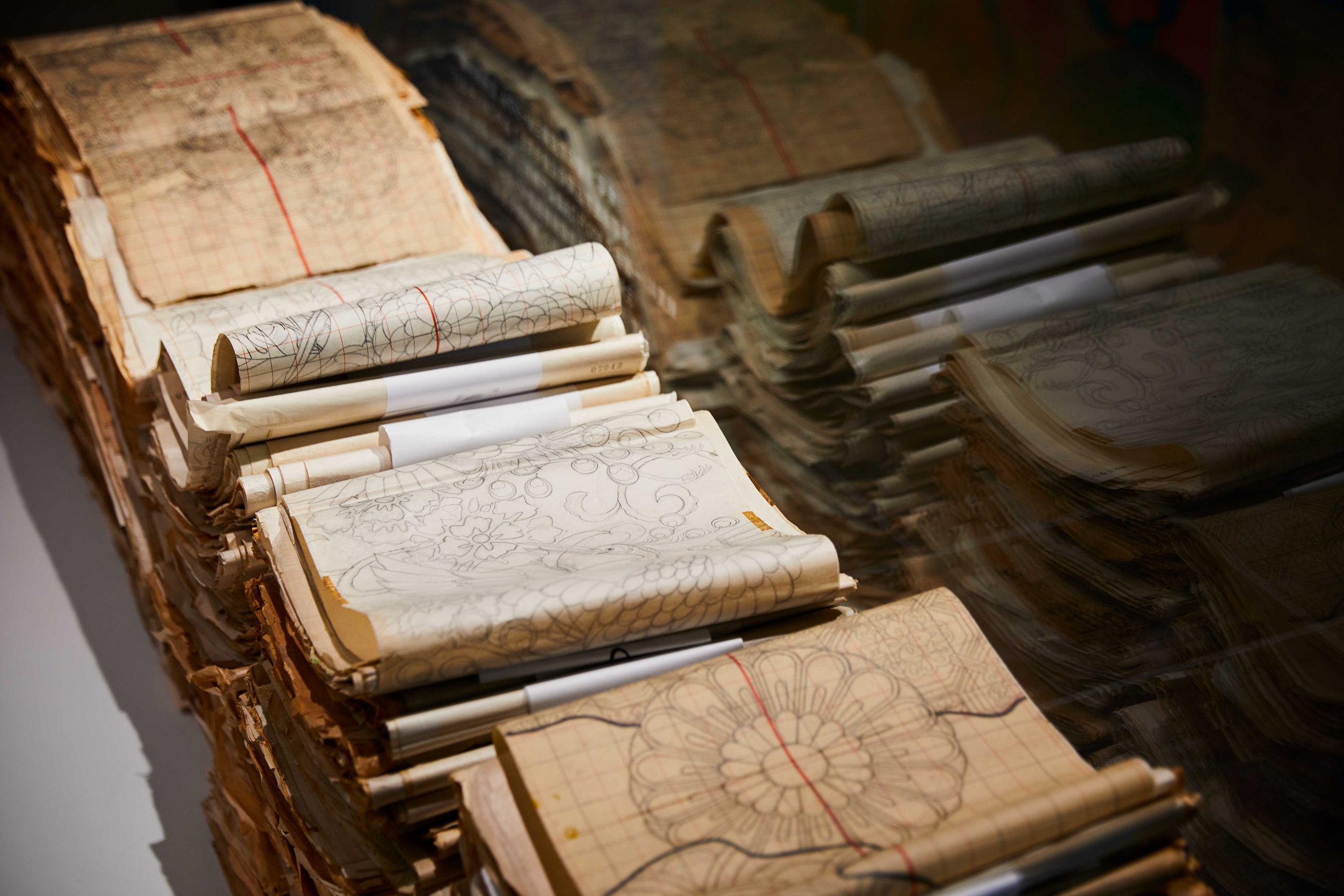
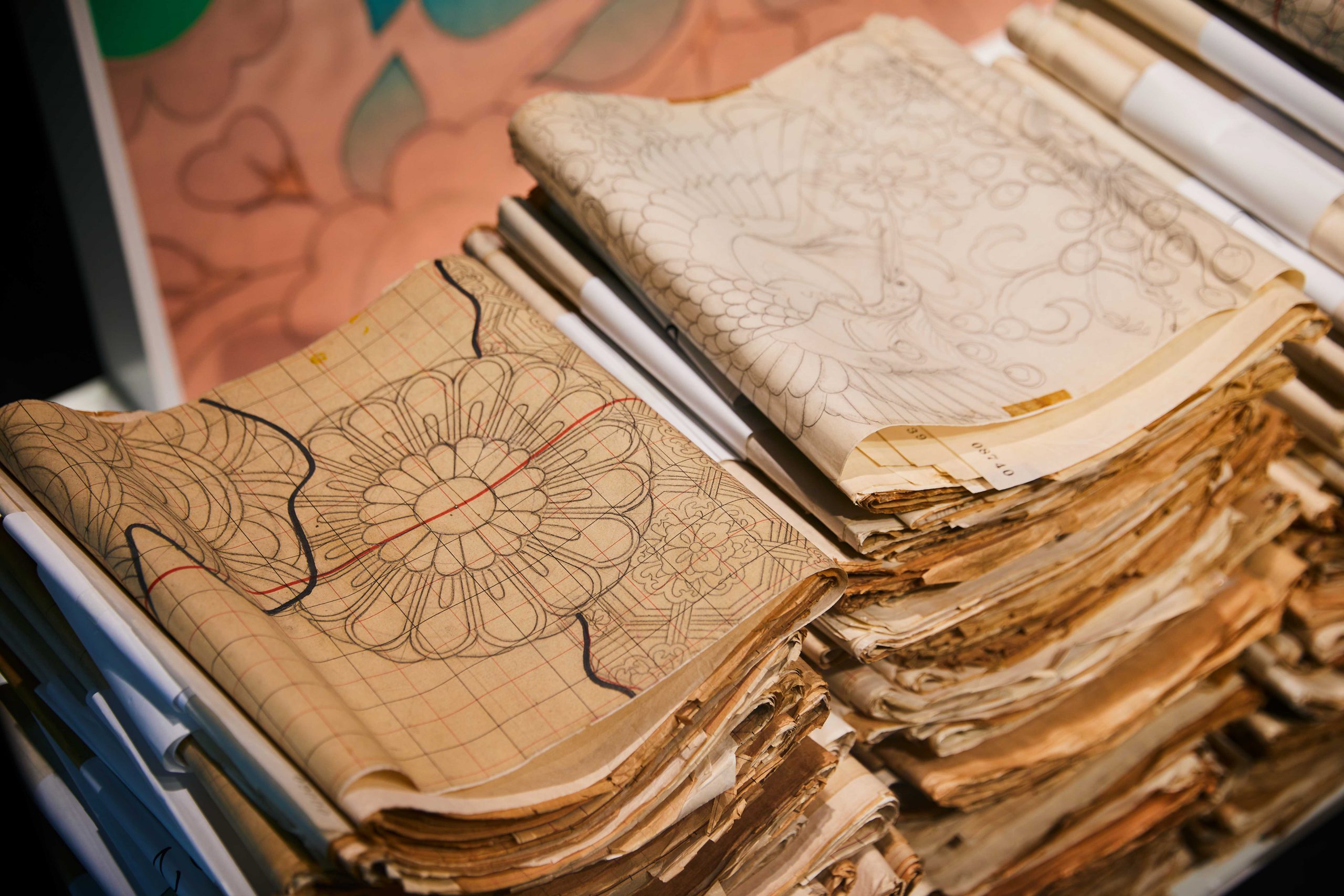
Learning and Generation of Patterns by AI, Modern Coloring
In the exhibition, we decided to incorporate AI to further understand the pure impulsiveness of these patterns. We welcomed Shoya Dozono (computational designer/programmer) to the team to utilize the digital archive through deep learning. More specifically, we had a type of AI, called Generative Adversarial Networks (GAN), define and learn the geometrical characteristics of a massive amount (up to about 14,000 pieces) of the zuan data, while ignoring the patterns’ meanings.
Following the learning process, we also had AI generate and visualize new designs as images. AI can create nonexistent designs that have the geometrical characteristics of the actual zuan by consistently comparing the existing designs with the newly generated ones and having them compete. As a result of learning and generating a vast amount of the zuan data using GAN, most of
the motifs, such as animals, people, and landscapes, disappeared. Instead, highly abstract plant patterns emerged in the design. On the other hand, the S-shaped patterns’ periodic characteristics, such as size, placement, and repetition frequency, visibly remained.
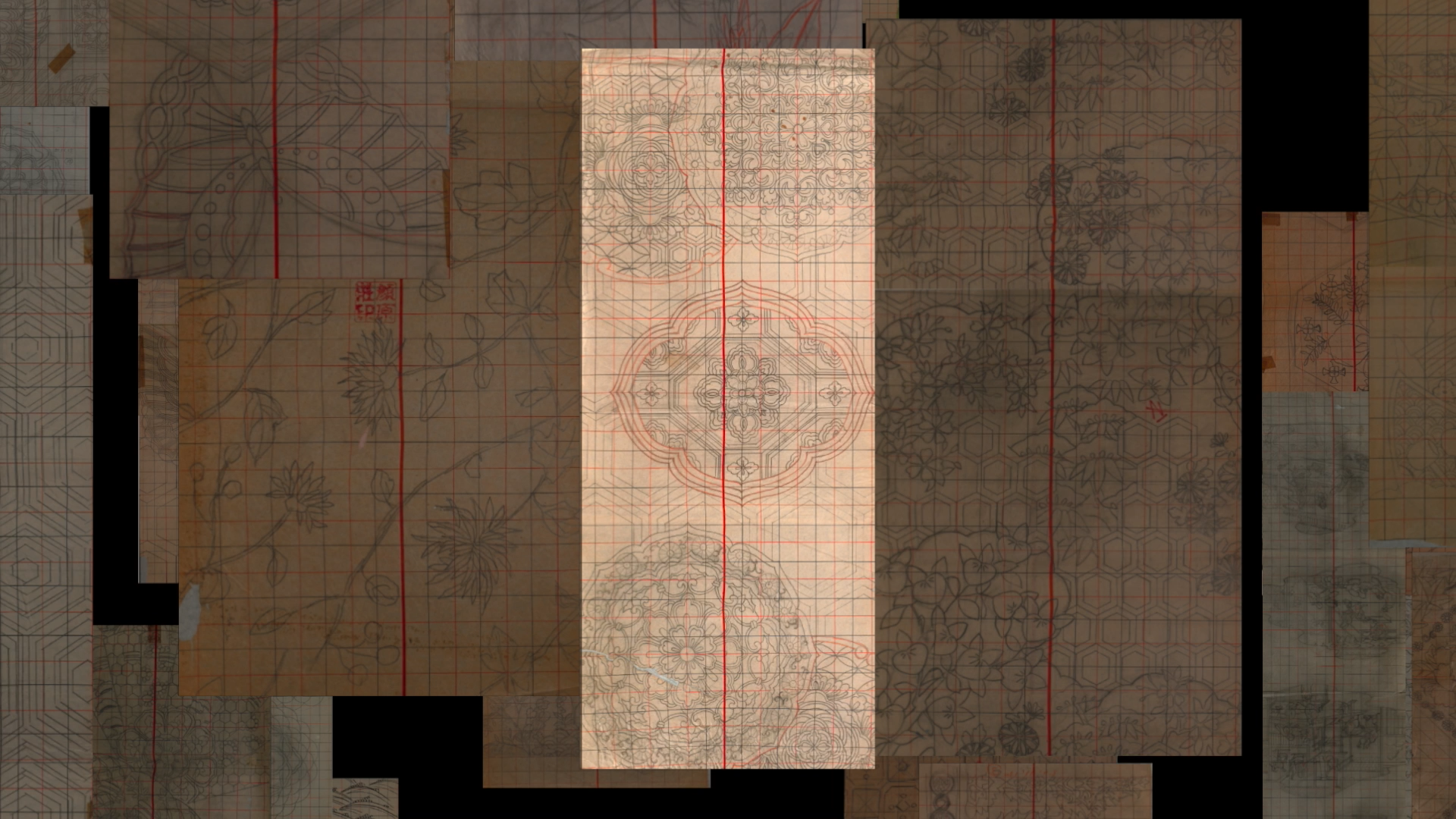
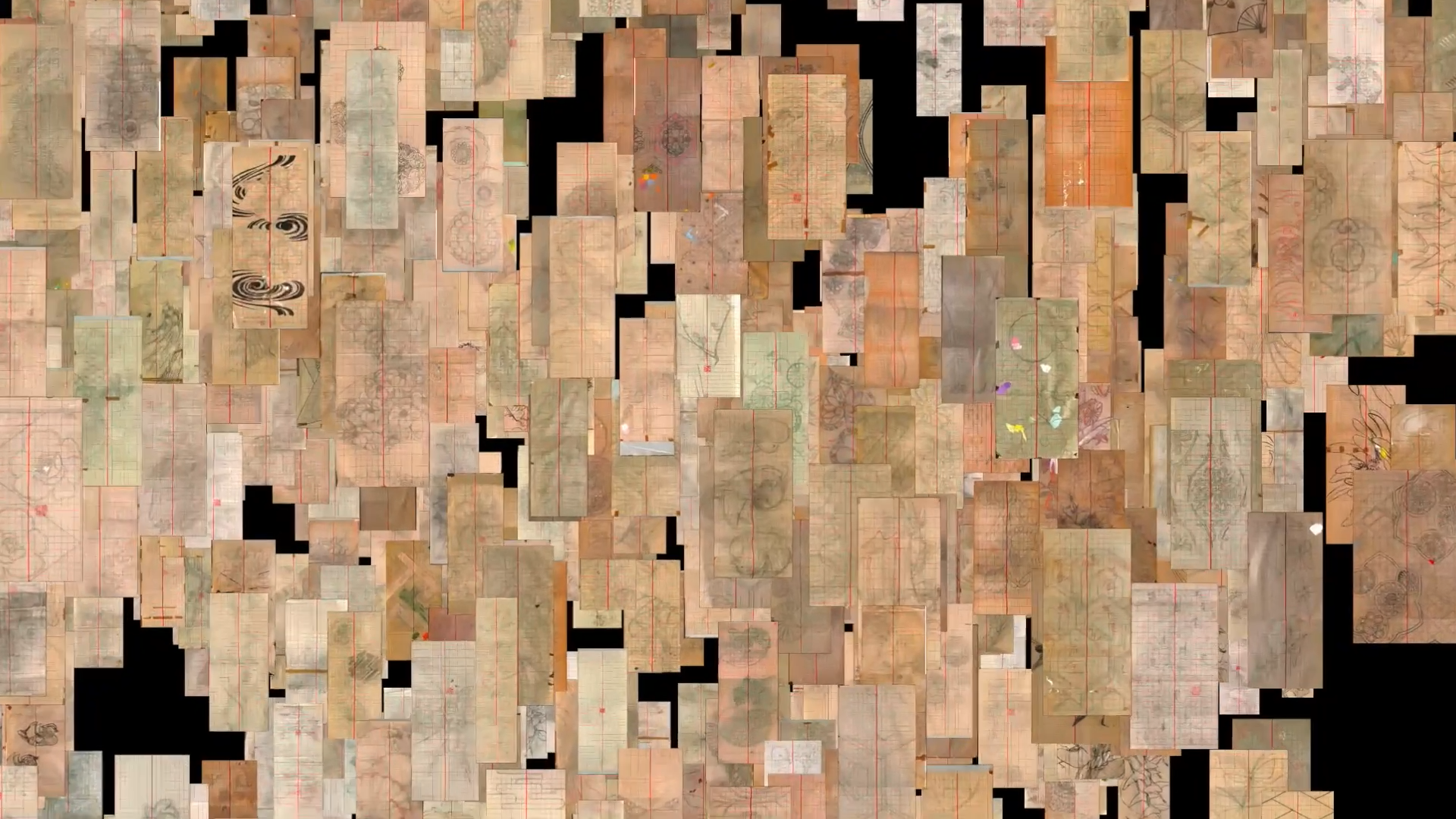
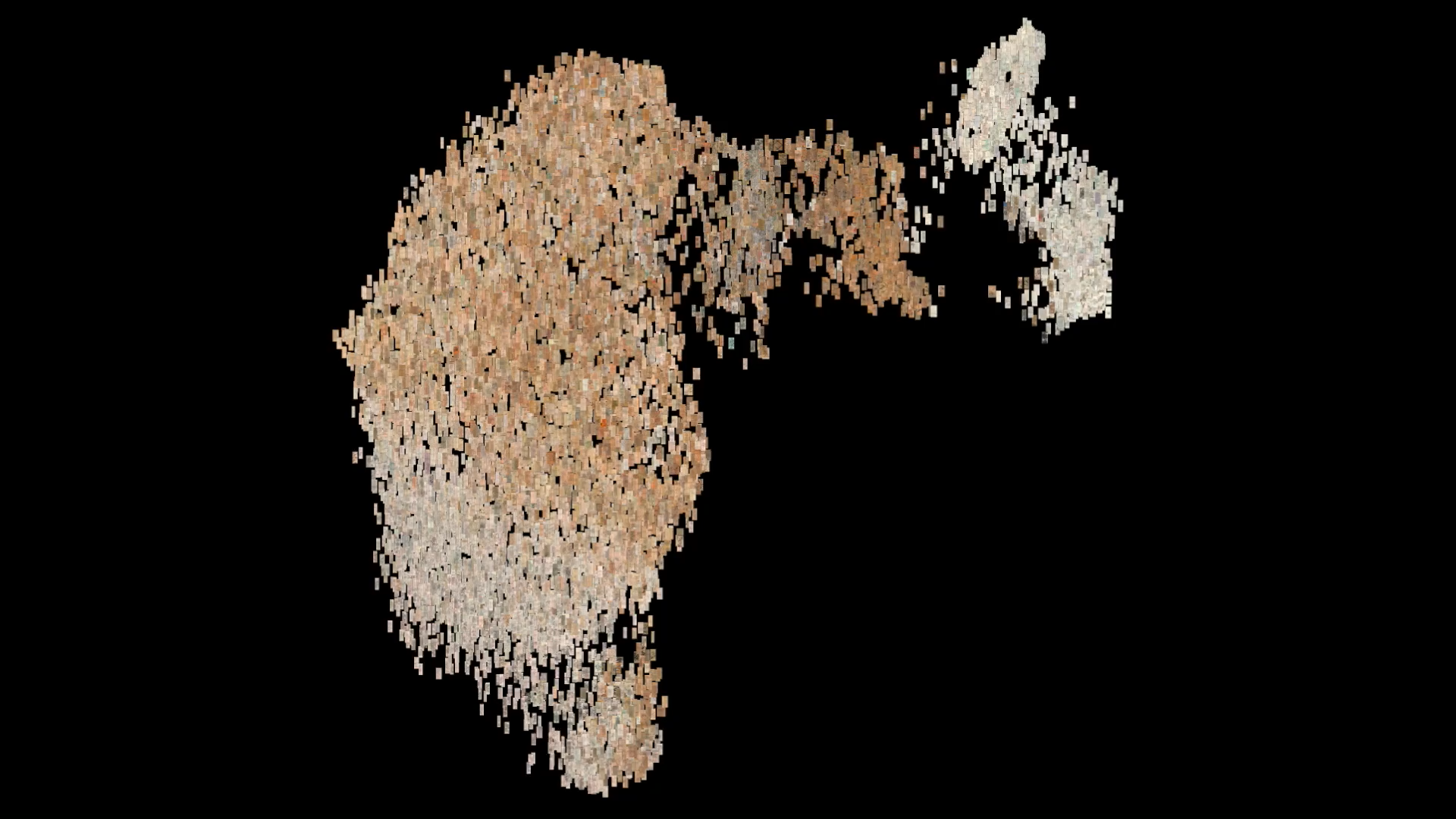
For the exhibition, we also asked the creative unit Spread to interpret the newly generated patterns and create colored zuan. They selected designs among the several thousand images generated by AI. According to Spread, they deliberately selected patterns whose shapes gave them physiological discomfort. They did so to avoid familiar appearances (meanings) of the patterns and to add color with a fresh perspective. In addition, they created a pixel-art-like zuan by turning the colored designs into a coarse grid pattern. This process allowed them to eliminate the patterns’ forms completely and emphasize only the colors. These gridded, rough designs are reminiscent of a type of textile blueprint, mon ishō zu [textile pattern template]. Furthermore, the creative unit manually varied the grid sizes to introduce unevenness to the designs. The grids on the hand-drawn zuan are precisely lined, and, at first sight, many of the patterns drawn on the grids appear to be accurately designed. However, in reality, according to the students from Kyoto University of the Arts involved in the Milestones Project, tracing the zuan designs on a computer revealed that the patterns had deformations unique to hand drawing. The final woven textiles also contain accidental deformations caused by weave structure or yarn’s physical properties. By focusing on this aspect, Spread intended to introduce unevenness unique to textile design into abstracted grids.
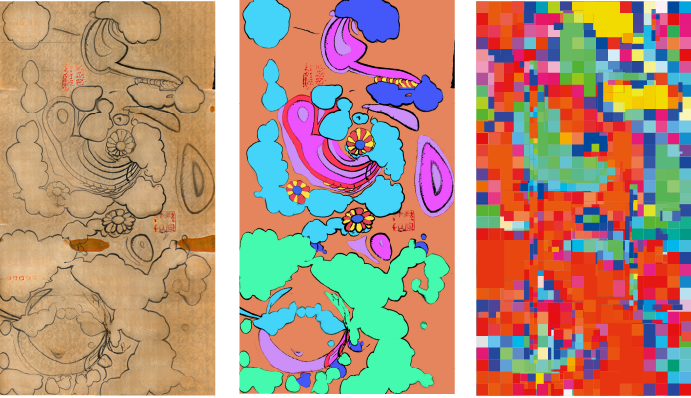
The process resulted in an installation of a colored zuan covering the floor of the exhibition venue. The evolution into an installation was, in a way, an experiment conducted as a prelude to the expansion into multiple media. In fact, Hosoo is considering applying and developing the patterns in virtual space, such as NFT and metaverse, in the future.
At Hosoo, they intend to explore various ways of expanding the “voids in zuan” to preserve the aesthetic essence of Nishijin textile and apply it to contemporary expressions.
